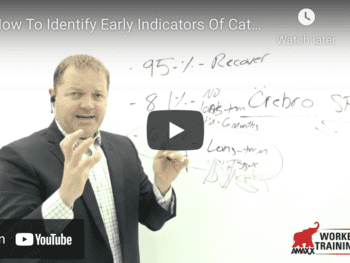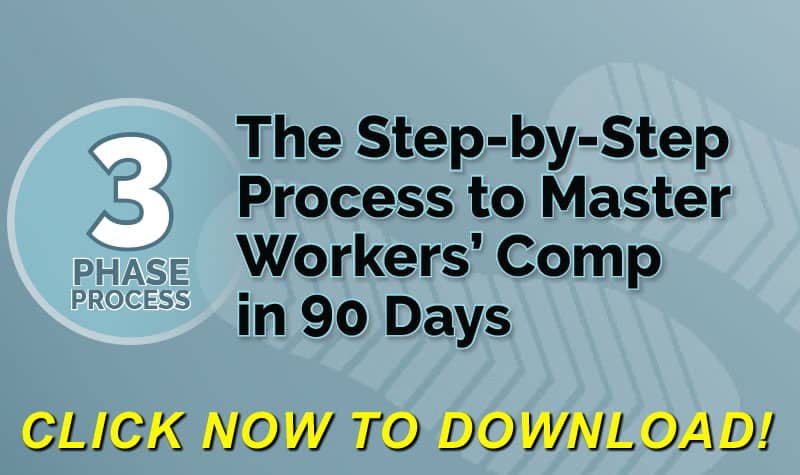
What are the Different Types of Indemnity Benefits?
There are generally four types of indemnity benefits. These types depend on whether the illness or injury results in a temporary or permanent disability and whether the injury is total or partial.
Temporary Total Disability (TTD)
TTD is the most common indemnity benefit. In most jurisdictions, the amount paid for TTD is based on a formula of 2/3rds multiplied by the employee’s average weekly wage (AWW). A few jurisdictions will use 75 or 80 percent of the employee’s net pay after income taxes to compute the AWW.
Temporary Partial Disability (TPD)
A treating physician may determine that the employee can return to work but only for a limited amount of time per day. This is when the TPD benefit comes into play.
For example, an injured employee can return to work 4 hours per day, but before the injury was working 8 hours per day. The TPD amount is then calculated by multiplying the AWW by the amount allowed within the jurisdiction by the fraction of the day the employee cannot work (4 hours divided by 8 hours =1/2). For example, if the AWW was $900 per week before the injury and the state statute allows the employee to collect 2/3rds of his AWW, the TPD rate is calculated as $900 X 2/3 X 1/2 = $300. This injured employee on TPD would collect half his standard wage or $450 plus his TPD of $300 for a total of $750 per week.
TPD is paid until the employee reaches maximum medical improvement (MMI) or can return to work full time, whichever occurs first. Some jurisdictions place limits on the number of weeks (or years) an employee can collect TPD.
Permanent Partial Disability (PPD)
When the employee’s treating physician determines that the employee has reached MMI, the physician determines the amount of permanent disability the employee suffered due to the injury. The amount of the PPD indemnity benefit may be a set scheduled amount, a percentage of a body part, or a percentage of the whole body.
Permanent Total Disability (PTD)
When a treating physician determines that the employee will never return to work, the employee becomes eligible for PTD benefits. In cases where the employee is rated as 100% disabled to the whole body, PTD is almost automatic.
Determining PTD is less clear when the employee has suffered severe injuries and cannot return to work for that employer but is not classified as 100% disabled. The nature and degrees of physical impairment, the employee’s educational level, the employee’s age, and the ability of the employee to be retrained for other suitable work, plus the availability of the other suitable work, are all factors in the determination of PTD.
The amount of PTD varies among jurisdictions. In some jurisdictions, the PTD rate is the same as the TTD rate. In other jurisdictions, the PTD rate is lower than the TTD rate and is a percentage of the TTD rate.
PTD benefits are paid until the employee can assume work in another field, or until the jurisdiction’s maximum number of benefit weeks is met (in most jurisdictions), until death (in a few jurisdictions), or until the employee reaches his full social security age (in a few jurisdictions).
How Long Can Indemnity Benefits Last?
The indemnity benefits continue as long as the employee is medically unable to work, with limitations on the maximum number of weeks in some states.
Can the employee collect indemnity benefits while working another job?
If the employee is able to do similar work for another employer, the employee is no longer medically unable to work, and temporary indemnity benefits should cease immediately. A possible exception to this would be for PPD benefits where the employee is unable to resume a manual labor position with your company but locates less strenuous employment with another company.
Author Rebecca Shafer, JD, President of Amaxx Risk Solutions, Inc. is a national expert in the field of workers’ compensation. She is a writer, speaker, and publisher. Her expertise is working with employers to reduce workers compensation costs, and her clients include airlines, healthcare, printing/publishing, pharmaceuticals, retail, hospitality, and manufacturing. She is the author of the #1 selling book on cost containment, Workers Compensation Management Program: Reduce Costs 20% to 50%. Contact:RShafer@ReduceYourWorkersComp.com.

Contact: mstack@reduceyourworkerscomp.com.
Workers’ Comp Roundup Blog: https://blog.reduceyourworkerscomp.com/
©2021 Amaxx LLC. All rights reserved under International Copyright Law.
Do not use this information without independent verification. All state laws vary. You should consult with your insurance broker, attorney, or qualified professional.
















